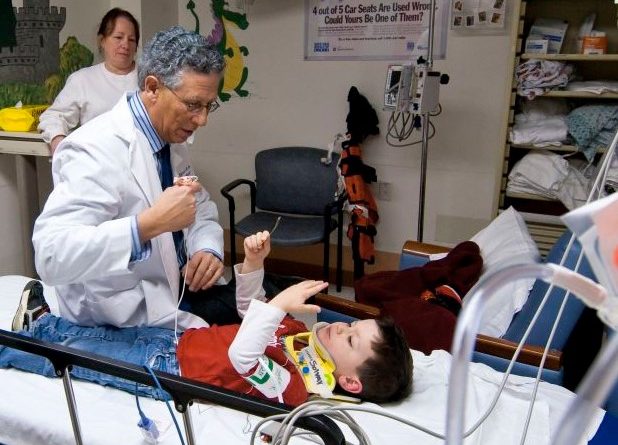Tips for Parents During Pediatric Emergency Visits in TX
Understanding Pediatric Emergency Visits
Pediatric emergency visits can be unnerving for any parent. The urgency, the unknowns, and the inherent worry about a child’s health can create immense stress. However, being equipped with the right information and approach can alleviate anxiety and ensure a smoother experience.
Choosing the Right Pediatric Emergency Facility
Selecting the appropriate facility in Watauga for pediatric emergencies is crucial. Proximity to home, available services, and specialized pediatric care should be considered when making this choice.
Preparation Before the Visit
Before rushing to the facility, it’s helpful to organize crucial documents and jot down the child’s medical history. This preparation can significantly expedite the initial assessment.
What to Expect During the Visit
Understanding the triage process and maintaining open communication with medical staff is vital. This ensures that your child’s needs are accurately assessed and attended to promptly.
Managing Emotions and Anxiety
Parents often grapple with their emotions during emergency visits. Employing calming techniques and addressing children’s fears can help maintain composure for both parent and child.
Engaging with Medical Professionals
Acting as your child’s advocate and asking relevant questions is encouraged. This engagement ensures a clear understanding of the diagnosis and treatment plan.
Understanding Treatment Plans and Procedures
Understanding the proposed treatment options, potential risks, and consenting to procedures are critical aspects that parents should grasp before proceeding.
Post-Visit Care and Follow-Up
Discharge instructions and follow-up appointments are essential. Understanding and implementing post-visit care instructions is crucial for the child’s recovery.
Common Misconceptions about Pediatric Emergency Visits
Addressing misconceptions and clarifying doubts surrounding pediatric emergency visits can ease apprehensions for parents.
Empowering Parents Through Knowledge
Access to reliable resources and understanding emergency procedures empower parents, fostering confidence during such critical situations.
Location Considerations
When faced with a pediatric emergency, proximity to a healthcare facility is critical. Living in Watauga, understanding the nearest emergency facilities specializing in pediatric care is advantageous. Knowing the quickest route and estimated travel time during emergencies can make a significant difference in response time.
Facility Specialties and Services
Not all emergency facilities are the same. Some cater specifically to pediatric emergencies, equipped with specialized pediatric equipment and staff experienced in handling children. Understanding the services offered by these facilities helps in making an informed choice when time is of the essence.
Preparation Before the Visit
Documenting Medical History
Maintaining a record of a child’s medical history is invaluable during emergencies. Documenting any known allergies, ongoing treatments, previous hospitalizations, and current medications streamlines the initial assessment, providing healthcare professionals with vital information for immediate care.
Assembling Necessary Documents
Bringing along identification, insurance information, and any relevant medical documents ensures a smoother admission process. Having these readily available expedites the administrative side of emergency visits, allowing focus on the child’s urgent needs.
What to Expect During the Visit
Triage Process Explanation
Understanding the triage process—how medical staff prioritize patients based on the severity of their condition—helps manage expectations. Parents should be aware of this process to comprehend waiting times and how it impacts their child’s care.
Communication with Medical Staff
Clear communication with medical professionals is essential. Parents should be prepared to describe the child’s symptoms accurately and openly discuss concerns. Creating an environment of open dialogue facilitates better understanding and decision-making between the medical team and parents.
Managing Emotions and Anxiety
Techniques for Staying Calm
Parents often experience heightened anxiety during emergencies. Implementing breathing exercises, maintaining a composed demeanor, and seeking support from medical staff or fellow parents can help manage these emotions effectively.
Addressing Children’s Fears
Children can be frightened during emergency visits. Offering reassurance, explaining procedures in a child-friendly manner, and providing comfort can significantly alleviate their fears, aiding medical staff in their assessment and treatment.
Engaging with Medical Professionals
Advocating for Your Child
Parents are their child’s best advocate. It’s essential to voice concerns, ask questions, and actively participate in decision-making regarding the child’s care. Advocacy ensures that the child’s needs are adequately met.
Asking Relevant Questions
Asking specific and relevant questions regarding diagnosis, treatment options, and potential risks aids in understanding the situation comprehensively. This clarity empowers parents to make informed decisions.
Understanding Treatment Plans and Procedures
Explaining Treatment Options
Understanding the available treatment options and their implications helps in making informed choices. Knowing the potential benefits and risks of each procedure assists parents in consenting to the most suitable treatment for their child.
Consent and Understanding Risks
Parents must comprehend the risks associated with treatments or procedures proposed by medical professionals. Clarifying doubts and consenting with full awareness ensures mutual understanding between medical staff and parents.
Post-Visit Care and Follow-Up
Understanding Discharge Instructions
Comprehending post-visit care instructions, medications prescribed, and follow-up recommendations is crucial for the child’s recovery. Parents should seek clarification on any instructions they find unclear before leaving the facility.
Follow-Up Appointments and Care at Home
Attending scheduled follow-up appointments and adhering to prescribed home care instructions are paramount. This continuity of care supports the child’s recovery and ensures any ongoing concerns are addressed promptly.
Common Misconceptions about Pediatric Emergency Visits
Addressing Misconceptions
Misconceptions about emergency procedures, waiting times, or the severity of certain symptoms can exacerbate anxiety. Clarifying these misconceptions helps parents approach pediatric emergencies more confidently and rationally.
Clarifying Doubts
Parents often have doubts or uncertainties about emergency protocols or the urgency of their child’s condition. Providing clear explanations and information alleviates these doubts, fostering trust and confidence in the healthcare system.
Conclusion
In conclusion, parental preparedness and understanding play pivotal roles in navigating pediatric emergencies in Watauga. Being equipped with knowledge, actively engaging with medical professionals, and addressing misconceptions empower parents to effectively support their child during these critical situations. Pediatric emergencies can be overwhelming, but with preparedness and knowledge, parents can navigate these situations more confidently. Understanding the process and being equipped can alleviate anxiety and ensure better outcomes for children.

